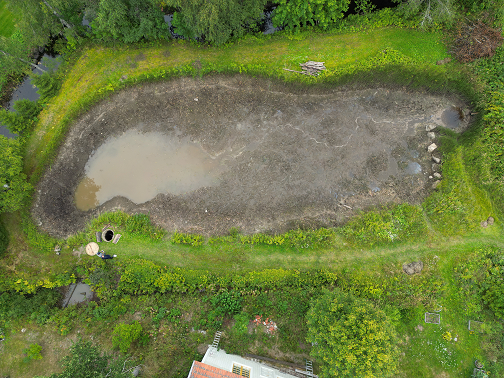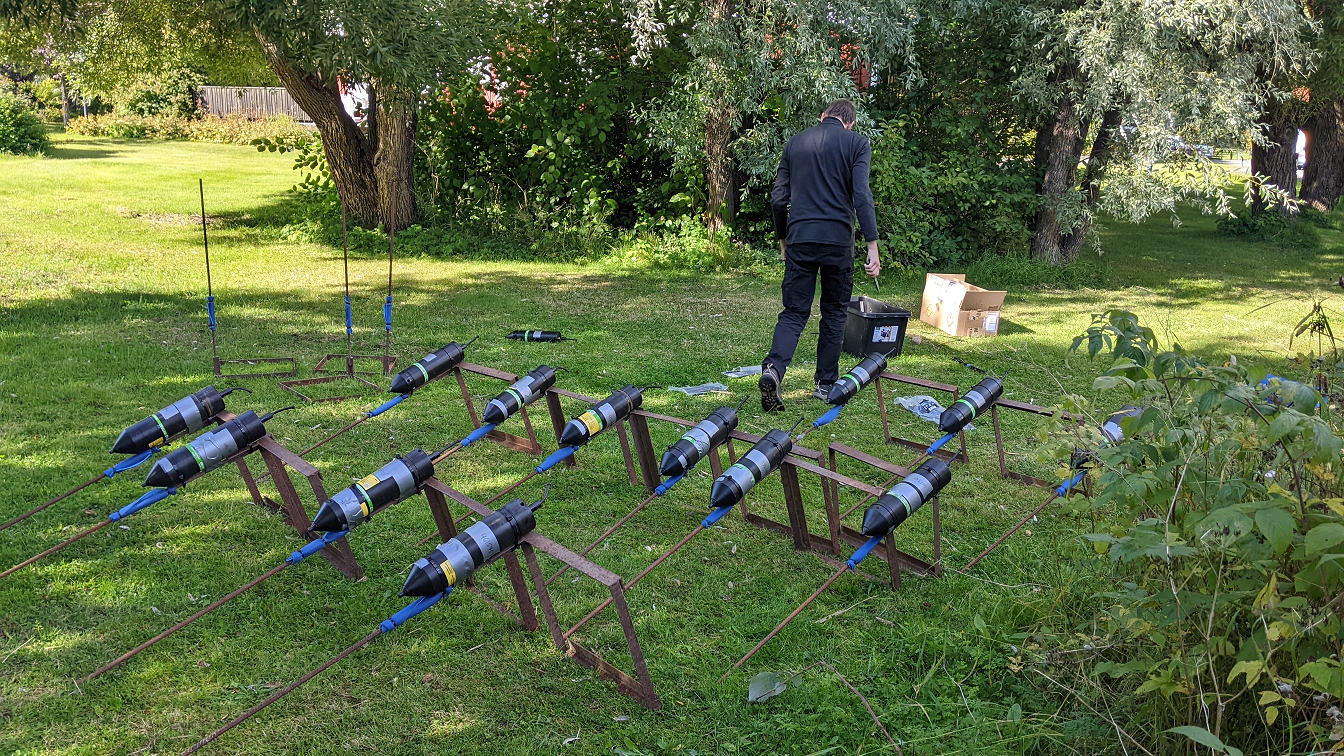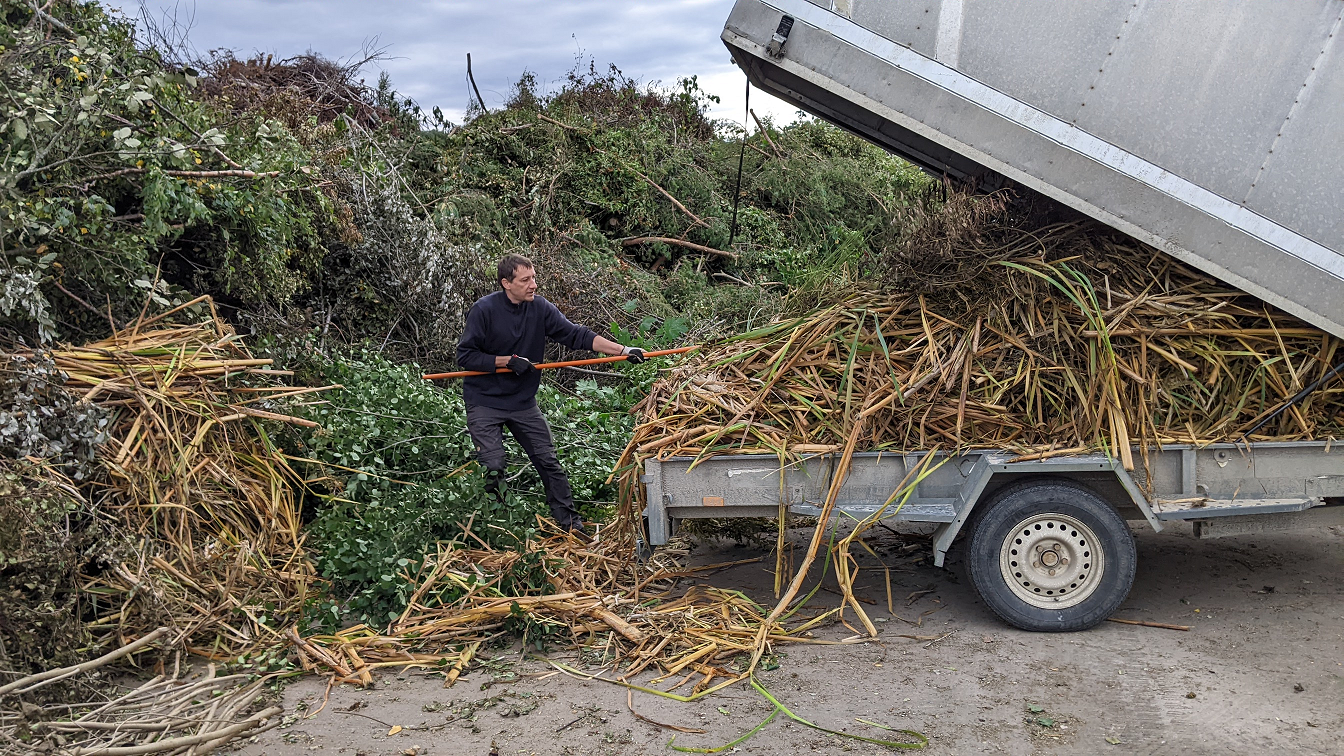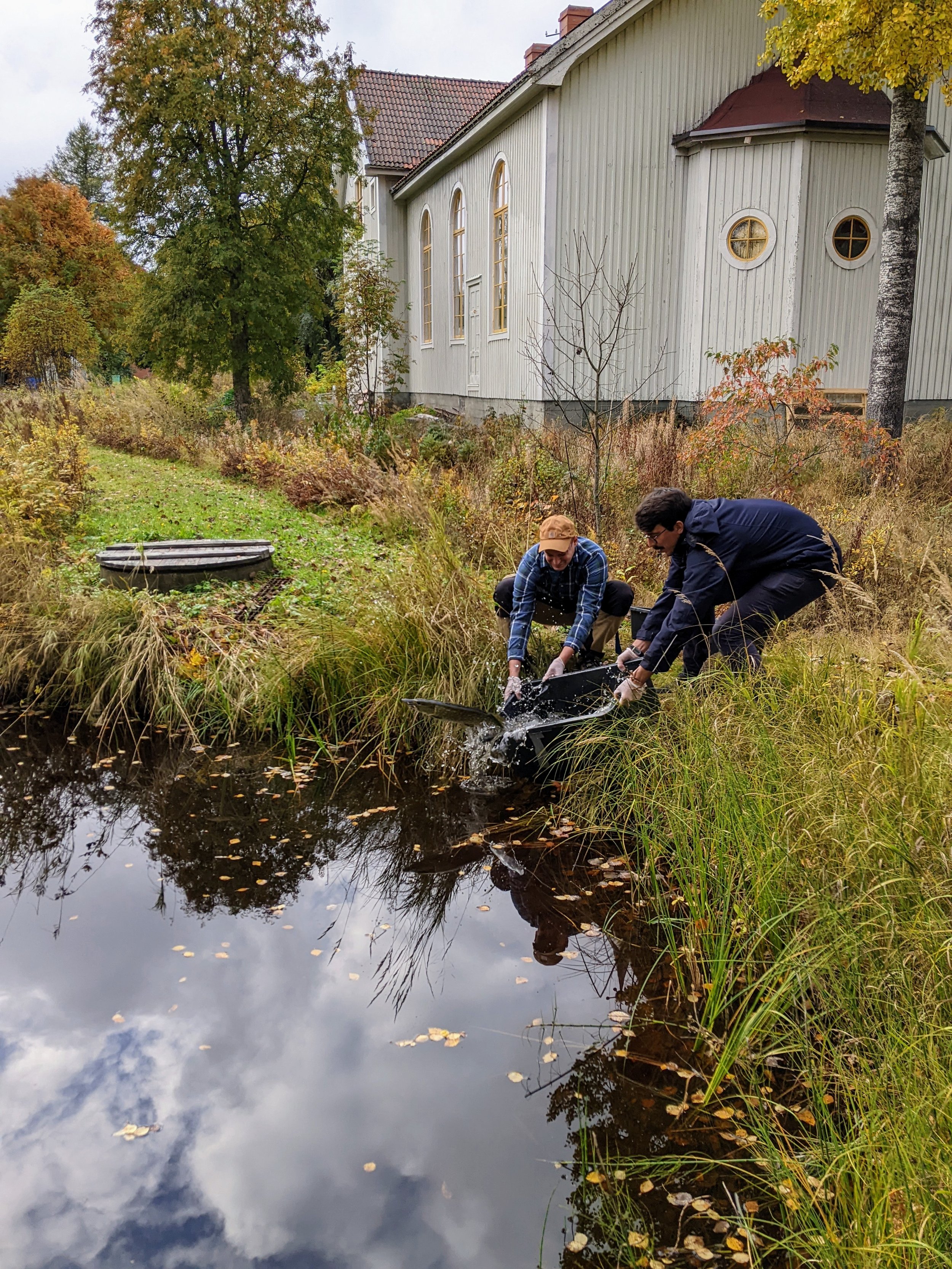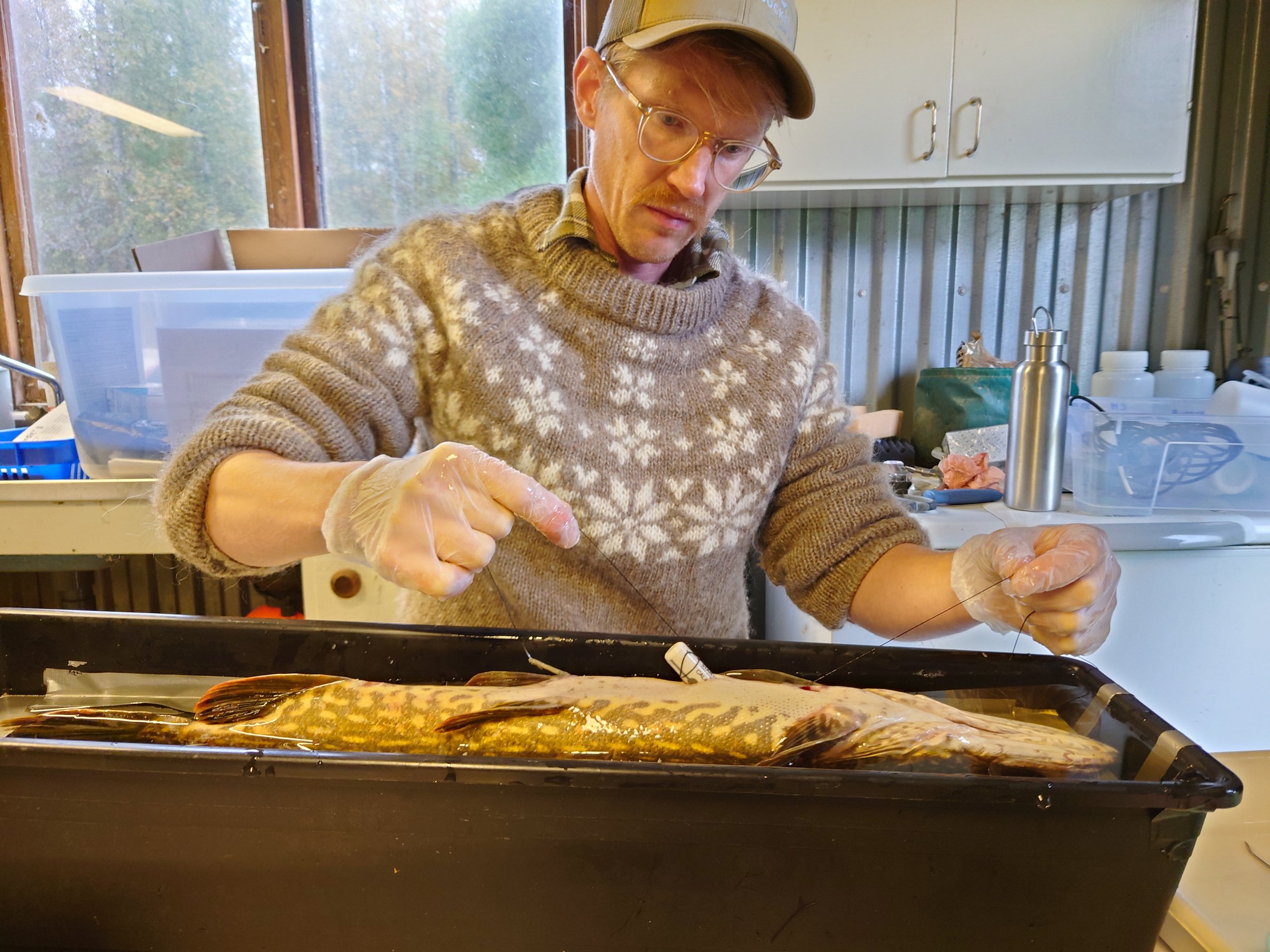Work package 4: How do pharmaceuticals affect species interactions and ecological landscapes?
In nature, animals interact with a whole community of species that will likely differ in their sensitivity to contaminants, leading to various ecological outcomes that cannot be predicted from single species studies alone. For example, behavioural changes in susceptible species may lead to indirect cascading effects on resistant species via changes in competitive interactions or predation pressure. Despite this real-world complexity, multi-species empirical studies are virtually non-existant in behavioural ecotoxicology. The objective of work package 4 is to identify how pharmaceutical-induced behavioural changes in fish affect key species interactions (i.e. predator-prey interactions and competition).
On the right: The experimental lakes empty. Top: Lake Muddyfoot; Middle: Lake BT (big thick); Bottom: Lake Cow Paradise. On the left: Jake, Aneesh and Dan working hard to catch fish (top), remove vegetation (bottom), and establish the acoustic recievers in each lake
We introduced 30 roach, 30 European perch and 6 Northern pike into each lake. These species are common freshwater fish species throughout Europe, and represent an ideal system for understanding the ecological impacts of pharmaceuticals because these species co-occur and play important but different roles in shaping aquatic food-webs. Roach and perch compete within a intermediate trophic position, whereas pike are top-order predators and commonly prey on both roach and perch.
Before releasing the fish into the lakes, we surgically inserted an acoustic transmitter tag into each fish, as well as a specially designed slow-release pharmaceutical implant, which contained either a mixture of three pharmaceuticals (fluoxetine, setraline and venlafaxine) or a control implant (see here). These slow-release implants allowed us to chronically expose the study animals across the entire experimental timeframe, and test both exposed and control fish in the same lake. We also surgically implanted pike with a centi-HRT ACT tag which allowed us to monitor predator heart rate activity and body temperature throuhghout the experiment. The acoustic telemetry tags inside each fish allowed us to collect high-resolution tracking data of each individual’s movement and habitat use, as well as the occurence of different interactions (e.g. predation events). Using these data we will be able to examine how exposure to a pharmaceutical mixture effects fish behaviour and interactions in natural and ecologically relevant settings.
Roach (Rutilius rutilius)
Perch (Perca fluviatilis)
Pike (Esox lucius)
In total the study ran for 40 days, and stopped just prior to the beginning of ‘winter’ in Sweden when lakes and rivers begin to freeze (they were already beginning to freeze when the study ended!). We retrieved the surving fish from the lake, and found that predation had indeed occurred (we found two pikes with undigested fish still in their guts!). We are now processing the data from the acoustic recievers. Hopefully, I will have some preliminary results to share soon. In the meantime, this work was covered twice by VK (A regional newspaper in Sweden) which you can check out here and here (unfortnately, the text is only available in Swedish).
Top right: Dan injecting the slow-release exposure implant into a perch. Bottom right: Aneesh and I releasing tagged pike in Lake Muddyfoot. Right: Gustav surgically implanting a heart rate biologger into a pike. Prior to surgery fish were anesthized to minimise any harm caused to the fish. We had 100% post-surgery survival.
This work was only made possible by the following funders
Due to some generous funding that I recieved from the Oscar & Lili Lamm Memorial Foundation, I was able to begin this work package much earlier than expected. In this study, I used three whole natural lakes near Umea, Sweden (see photos on the right). These lakes could be drained, which allowed me, with the enourmous help of my close collaborators, to manipulate the species composition and landscape within each lake. We altered the vegetation in each lake in order to standardize the available habitat (i.e. we wanted the lakes to have similar levels of available habitat to control for variation between lakes). Lakes were also fitted with 5-6 acoustic telemetry recievers which are used to recieve location signals from acoustic telemetery tags.


